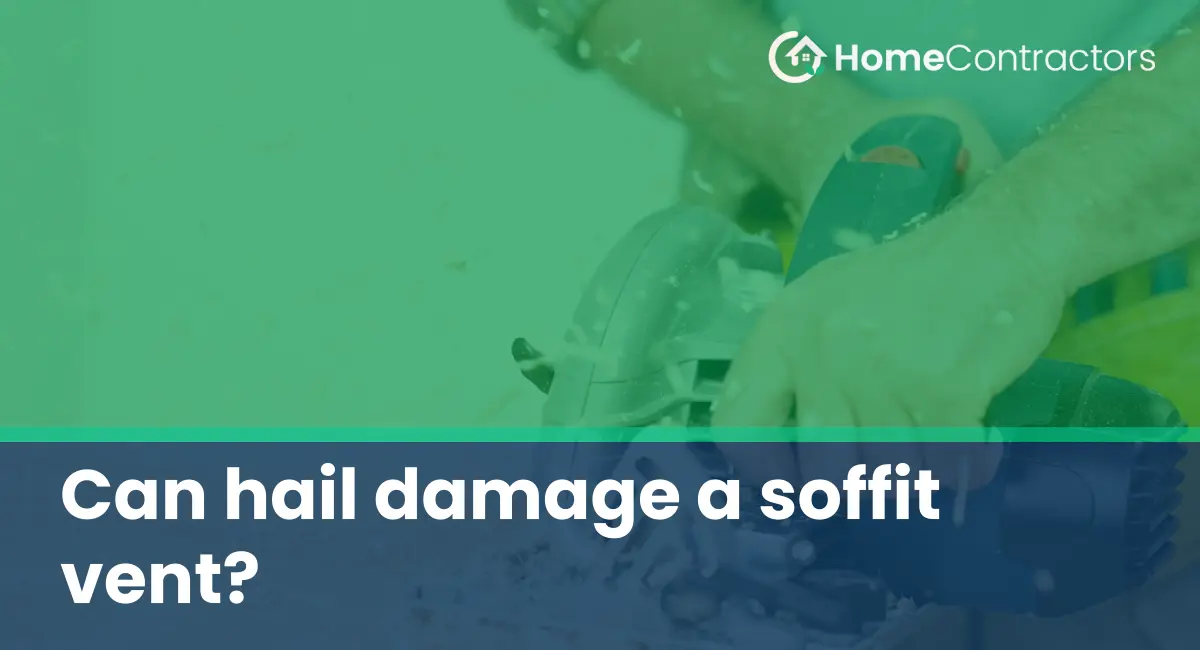Introduction: Understanding Soffit Vents and Hail Damage
Soffit vents are an essential component of a home’s ventilation system, allowing fresh air to flow into the attic while expelling moisture and preventing heat buildup. These vents are typically located underneath the eaves of a roof and are often made of materials such as aluminum or vinyl.
Hailstorms can be a significant cause of concern for homeowners as they can inflict damage to various parts of the house, including the roof. This article aims to explore whether hail can damage a soffit vent and the potential consequences of such damage.
1. The Vulnerability of Soffit Vents to Hail Damage
Soffit vents are generally designed to be durable and withstand regular weather conditions. However, hail can pose a different level of threat. Hailstones vary in size, density, and velocity, which can determine the extent of damage they can cause.
a. Size of Hailstones: Larger hailstones have a higher potential for causing damage compared to smaller ones. If the hailstones are significantly large, they can crack or break the vent material on impact.
b. Density and Velocity: The density and speed at which hailstones fall can also affect the damage they inflict. Dense hailstones traveling at high speeds can dent or puncture the vent material, compromising its functionality.
2. Potential Consequences of Hail Damage to Soffit Vents
When a soffit vent sustains damage from hail, it can lead to several issues that may affect the overall well-being of a home.
a. Decreased Ventilation Efficiency: Hail damage, such as cracks or breakage in the vent material, can hinder the proper airflow into the attic. Reduced ventilation can contribute to inadequate moisture control, leading to potential mold growth, wood rot, or decreased energy efficiency.
b. Entry Point for Water: Hail damage can also create openings in the soffit vent, allowing rainwater to infiltrate the attic. This can lead to water damage and compromise the structural integrity of the roof and surrounding areas.
c. Pests and Wildlife Infestation: Damaged soffit vents can provide an entry point for small animals, insects, or birds seeking shelter. Wildlife intrusion can cause further damage and create potential health hazards for homeowners.
3. Signs of Hail Damage to Soffit Vents
Identifying hail damage to a soffit vent is crucial for prompt repairs and preventing further complications. Here are some signs to look out for:
a. Visible Dents or Cracks: Inspect the vent visually for any visible dents, cracks, or breaks in the material.
b. Displaced or Broken Components: Check if any parts of the vent, such as louvers or screens, are out of place or damaged.
c. Water Stains or Moisture Intrusion: If there are signs of water stains or moisture inside the attic, it may indicate that the vent has been compromised by hail damage.
4. Addressing and Repairing Hail Damage to Soffit Vents
Upon detecting hail damage to a soffit vent, prompt action must be taken to restore its functionality and protect the home from further harm. It is advisable to contact a professional contractor or roofing specialist to assess the damage accurately and provide the necessary repairs.
a. Temporary Fixes: In cases where immediate repair is not possible, temporary measures such as covering the damaged vent with a tarp or using waterproof sealants can help minimize further water intrusion until permanent repairs can be undertaken.
b. Complete Vent Replacement: Depending on the severity of the damage, a complete vent replacement may be necessary. A professional can guide homeowners in selecting suitable vent materials and ensure proper installation for optimal ventilation.
While soffit vents are designed to withstand normal weather conditions, hailstorms can pose a threat to their functionality. Hailstones of various sizes, densities, and velocities can cause damage to soffit vents, compromising their ability to properly ventilate the attic. Homeowners should be proactive in examining their soffit vents for hail damage and seek professional assistance for repairs to prevent potential consequences such as reduced ventilation efficiency, water intrusion, and pest infestation. Regular maintenance and prompt repairs ensure the continued protection and longevity of soffit vents, supporting a healthier and more durable home.
